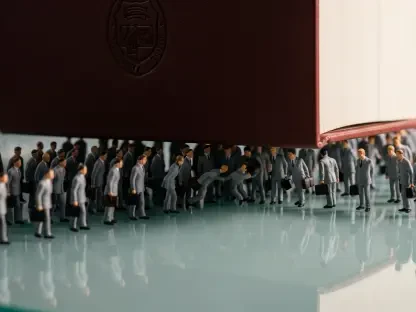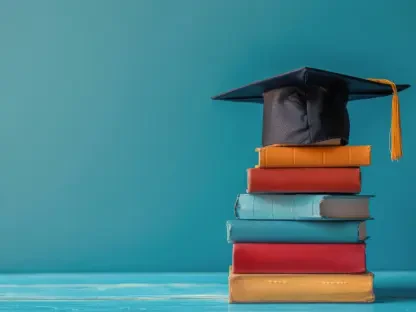On a vibrant evening at the Star Event Centre in Sydney, over 600 attendees gathered on August 8 to witness a remarkable celebration of achievement within Australia’s education system, marking the eighth year of this cornerstone event. This annual occasion has become essential for recognizing the dedication and innovation of educators, schools, and leaders across all states, territories, and sectors, including government, non-government, and special education. With 29 distinct categories, the awards honored a wide array of accomplishments, from individual contributions of teachers and principals to institutional milestones achieved by schools nationwide. The ceremony not only spotlighted the winners but also served as a powerful reminder of the transformative impact education holds for future generations. It painted a vivid picture of progress, highlighting how creativity and commitment continue to shape learning environments. This article delves into the standout moments, key themes, and inspiring stories from the night, offering a comprehensive look at the strides being made in Australian education.
Honoring Transformative Leadership
Leadership emerged as a defining theme during the awards ceremony held at the Star Event Centre, reflecting its critical role in advancing educational excellence. The Compass Australian School Principal of the Year award, bestowed upon Dr. Adrian Camm of Westbourne Grammar School, highlighted the profound influence a dedicated leader can wield in fostering a thriving academic community. His recognition emphasized how principals serve as catalysts for change, inspiring both staff and students to reach new heights through visionary strategies and unwavering support. Beyond individual accolades, this category underscored a broader appreciation for the foundational role leadership plays in navigating the complexities of modern education, ensuring schools remain adaptive and inclusive in their approach.
Equally significant was the acknowledgment of leadership across various administrative levels, as seen in honors like Department Head of the Year, awarded to Marten Visser of St Margaret’s Berwick Grammar. This recognition shed light on the importance of strong guidance beyond the principal’s office, illustrating how department heads contribute to shaping specialized areas of learning and maintaining cohesive school cultures. Their efforts often bridge the gap between overarching school goals and day-to-day classroom dynamics, ensuring that innovative ideas are implemented effectively. Such awards reaffirm that impactful leadership is a collective endeavor, with each role contributing uniquely to the overarching mission of educational advancement in diverse settings across Australia.
Embracing Innovation in Education
Innovation stood as a cornerstone of the night, with numerous categories dedicated to recognizing groundbreaking approaches to teaching and learning. The Street Science Best STEM Program award, presented to Murrumbidgee Regional High School – Griffith, celebrated the integration of science, technology, engineering, and mathematics into curricula designed to equip students for a fast-evolving world. This achievement highlighted a growing trend of prioritizing hands-on, problem-solving education that prepares young minds for future challenges in tech-driven industries. It also showcased how regional schools are stepping up to deliver cutting-edge programs, ensuring that access to high-quality STEM education is not limited by geography but is instead a national priority reflected in diverse award categories.
Another focal point was the transformative use of digital tools and learning spaces, exemplified by Larrakeyah Primary School’s win for Best Use of Technology. This recognition pointed to the increasing reliance on technology to enhance student engagement and personalize learning experiences, from interactive platforms to data-driven teaching methods. Meanwhile, Joseph Banks Secondary College earned the Innovation in Learning Environment Design award, signaling a shift toward reimagining both physical and pedagogical spaces to optimize educational outcomes. These awards collectively reflect a forward-thinking mindset within Australian schools, where innovation is not just an add-on but a fundamental component of creating dynamic, responsive learning environments that cater to the needs of 21st-century students.
Championing Student Well-Being and Equity
A profound commitment to student well-being resonated throughout the awards, emphasizing that education extends far beyond academic achievement. Loganlea State High School’s triumph in the Parentshop Best Student Wellbeing Program category demonstrated a dedication to nurturing emotional and social growth alongside intellectual development. This program’s success illustrated how schools are increasingly prioritizing mental health support, counseling services, and safe spaces where students can thrive holistically. Such initiatives are vital in addressing the pressures of modern life, ensuring that young individuals are equipped with resilience and emotional tools to navigate challenges both inside and outside the classroom, a theme that echoed across various recognitions on the night.
Inclusivity also took center stage, with awards celebrating efforts to support diverse student populations and cultural perspectives. Bellbird Park State Secondary College’s win for Best First Nations Education Program highlighted the importance of integrating Indigenous knowledge and values into mainstream education, fostering respect and understanding among all students. Similarly, Yeronga State High School’s Horizons Women’s Hub was recognized for empowering female students through targeted initiatives that address gender-specific barriers. These honors reflect a broader movement toward equity, ensuring that education serves as a platform for uplifting underrepresented groups and creating environments where every student, regardless of background, has the opportunity to succeed and feel valued within their school community.
Reflecting Diversity Across Educational Landscapes
The breadth of recognition at the awards ceremony showcased the diversity of educational contexts across Australia, ensuring that excellence was celebrated in all its forms. Hunter Sports High School’s prestigious designation as Wayground Australian School of the Year exemplified how specialized institutions can achieve national prominence through focused programs that blend academics with unique strengths like sports development. This accolade underscored the potential for schools to carve out distinctive identities while delivering outstanding results, inspiring others to think creatively about their educational offerings. It also highlighted the importance of community engagement in building a school’s reputation, as such institutions often rely on strong local support to sustain their specialized missions.
Regional and sectoral diversity further enriched the narrative of the night, with awards acknowledging achievements beyond urban centers and across funding models. Maryborough State High School’s title of Regional School of the Year proved that geographic location does not limit educational quality, as regional schools continue to innovate and excel despite unique challenges like resource constraints. Additionally, distinctions between government and non-government sectors were evident in categories like Primary School of the Year, awarded to Labrador State School and Haileybury respectively, ensuring balanced representation. Warakirri College’s recognition as Special Education School of the Year further emphasized the critical role of tailored education in addressing unique student needs, reinforcing that excellence thrives in every corner of the educational spectrum.
Looking Back and Moving Forward
Reflecting on the awards ceremony held on August 8, it became clear that the event was a powerful tribute to the relentless dedication and ingenuity within Australia’s education sector. The night celebrated transformative leadership through figures like Dr. Adrian Camm, whose impact at Westbourne Grammar School set a high standard for principals nationwide. Innovations in STEM and technology, as seen with winners like Murrumbidgee Regional High School and Larrakeyah Primary School, showcased how schools adapted to modern demands with forward-thinking programs. Moreover, the focus on well-being and inclusivity, exemplified by Loganlea State High School and Bellbird Park State Secondary College, highlighted a commitment to holistic student development that resonated deeply.
Looking ahead, the achievements honored on that evening serve as a blueprint for future progress in education. Schools and educators are encouraged to build on these successes by prioritizing leadership development, investing in innovative teaching methods, and fostering environments where every student’s needs are met with empathy and equity. Collaboration across sectors and regions will be key to sustaining this momentum, ensuring that the lessons from the awards inspire actionable change. As the education community moves forward, the emphasis should remain on creating inclusive, dynamic learning spaces that prepare students not just for today, but for the challenges and opportunities of tomorrow.









